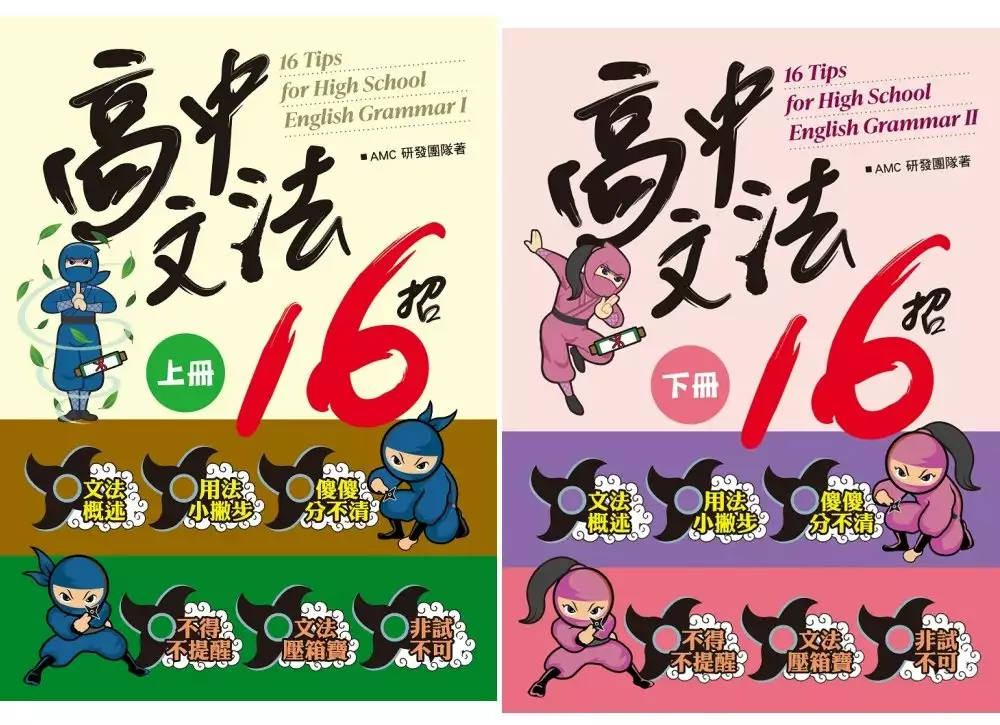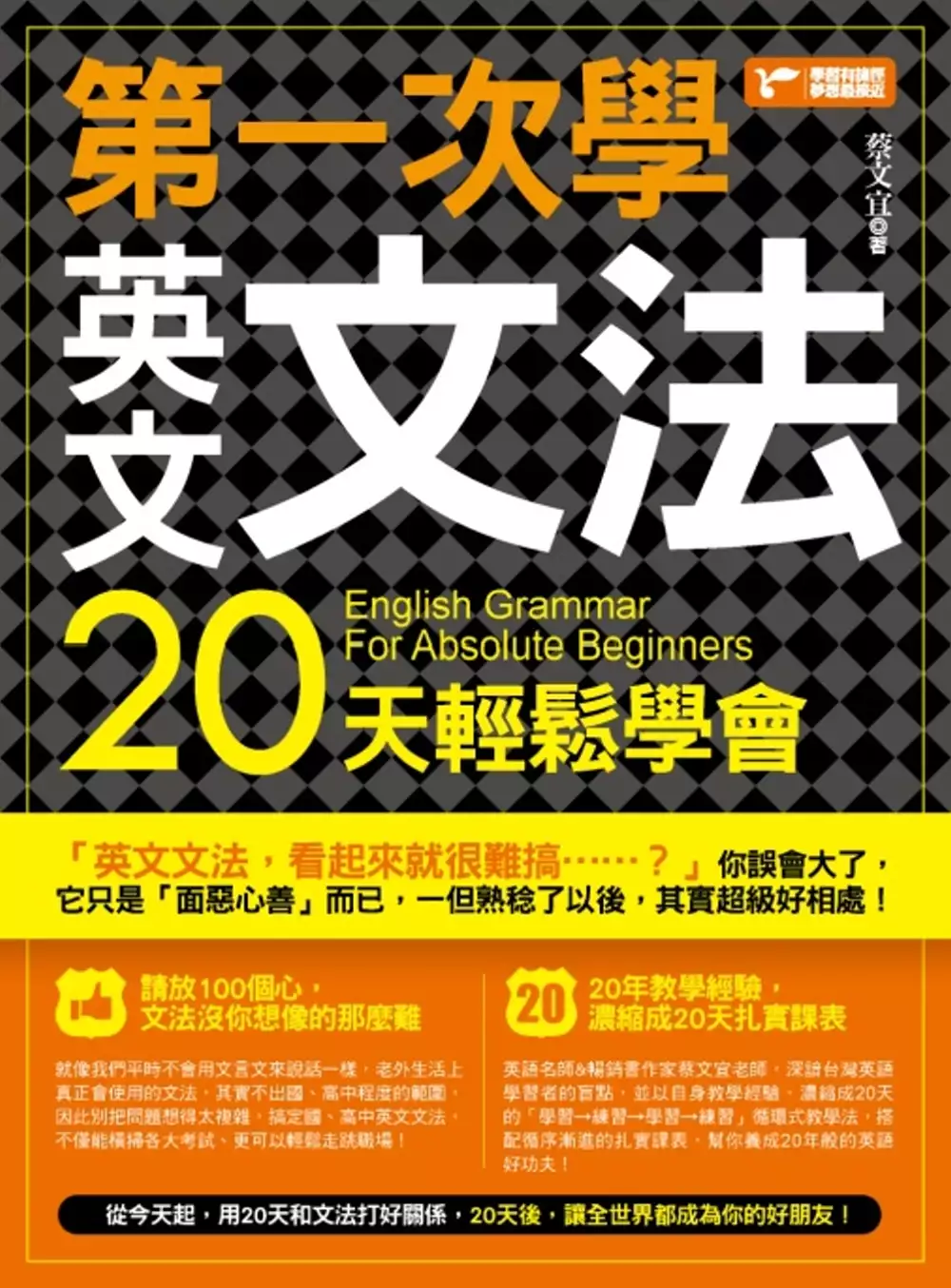Make +O + OC的問題,我們搜遍了碩博士論文和台灣出版的書籍,推薦空中美語叢書編輯群寫的 高中文法16招 (上、下+2簡答) 和蔡文宜的 第一次學英文文法,20天輕鬆學會都 可以從中找到所需的評價。
這兩本書分別來自空中美語 和捷徑文化所出版 。
臺北醫學大學 牙體技術學系碩士班 沈永康所指導 TAUFIK ABDULLAH M.的 3D生物列印策略製作生物高分子支架於骨再生應用 (2021),提出Make +O + OC關鍵因素是什麼,來自於3D bioprinting、biopolymer、bio-inks、scaffold、bone regeneration。
而第二篇論文國立政治大學 東亞研究所 黃瓊萩所指導 阮功松的 民之所欲常在我心?民意對越南對美與對中政策之影響 (2021),提出因為有 越南、美國、中國、民意、議題顯著性、國內政治競爭的重點而找出了 Make +O + OC的解答。
高中文法16招 (上、下+2簡答)

為了解決Make +O + OC 的問題,作者空中美語叢書編輯群 這樣論述:
《高中文法 16 招》是根據教育部頒發的 108 課綱、著重素養導向編撰而成的高中文法書。本書共分為 16 單元,內容包含高中生應學會的文法、歷屆大考文法相關試題,精讀本書後,相信學生對文法能夠融會貫通,並在考場上游刃有餘。 本書的結構說明如下: 一、文法概述:學生將會對本單元要學習的文法有通盤的基本了解。 二、文法詳解: 1. 詳細的文法解析。 2. 四種小單元輔助學生釐清困惑、深入學習: 傻傻分不清:針對該文法中或和其他文法容易混淆的部分加以比較分析。 不得不提醒:該文法中應注意之事項及易錯之處。 用法小撇步:針對該文法的簡短補充。 文法
壓箱寶:和該文法相關的衍伸或進階文法補充。 3. 針對該文法設計的練習題,學生可現學現用,加深記憶。 三、每單元後的練習題:包括配合題、文法選擇、克漏字選擇、翻譯題等,學生可複習該單元學過的文法,並熟悉該文法如何應用於考題上。
3D生物列印策略製作生物高分子支架於骨再生應用
為了解決Make +O + OC 的問題,作者TAUFIK ABDULLAH M. 這樣論述:
Title of thesis : 3D bioprinting strategies based on biopolymers scaffolds for bone regenerationAuthor : Taufik Abdullah MappaThesis advised by : Yung-Kang ShenSchool of Dental Technology,College of Oral Medicine, Taipei Medical University.Background: Multidisciplinary collaboration in tissue
engineering for bone regeneration, reconstruction, or improved function in the regenerative medicine field uses methods to promote cell growth by manipulating various biomaterials. In advanced technology, bone graft substitutes are most popular because it was made through bone tissue engineering us
ing bone support cells and growth factors to stimulate cells seeded on a scaffold of natural or synthetic biomaterials. This study focused on the bone gets a traumatic injury also as well as occurs a directly immune response due to the immune cells accumulate at the injury spot as regulating the mul
tiple inflammatory growth factors. In the human body, cortical and cancellous bones have a different structure looked at from macro and micro-architecture, leading to the difference bone strength in the functional segment. Cancellous as internal bone tissue that provides a porous like spongy structu
re around 50–90% porosity volume if compared to the cortical bone obtained 5–15% porosity. Through this specification, we can regeneration the bone uses 3D scaffolds to stimulate osteoblast, osteogenic, osteoclasts, and osteocytes by the proliferation of bone cells. Bone graft substitutes have succe
ss in bone transplantation surgery through the application of three-dimensional (3D) construct required for bone function reconstruction. The primary function of scaffolds is to build a structural and mechanical support for the interactions of cells, providing a microenvironment that is responsive f
or cells osteogenesis to attach, task, and produce bone extracellular matrix (ECM) on the surface. The combination of several biopolymers like a sodium alginate and gelatin to make the 3D scaffolds using micro-extrusion bioprinting is the advanced bone graft substitute methods. The cells and biomate
rials are extruded via a nozzle that produces shear and extensional stresses. The MG63 cells adaptability into the alginate-gelatin hydrogels provide advantages like good printability and cell viability, then same study trying to find the ideal characterization thru types of biopolymers and the cell
s including this research. Objective: to investigate the mechanical, rheological, printability, and cell viability characterizations of 3D bioprinting strategies based on biopolymers scaffolds for bone regeneration. Methods: A regenHU 3D Discovery 8.23.8.26 was assembled and used to print bio-inks b
ased hydrogels through micro-extrusion bioprinting methods. The pattern of scaffolds designed by 3D Global Biotech Inc. Bioinks as gelatin from porcine skin (Sigma, gel strength 300 type A, G2500, USA) combined with sodium alginate (Sigma-Aldrich, W201502, China) were synthesized by the heat-trea
tment at a temperature of 65oC (CORNING, PC-420D, USA) was stirrer (Chemist, MS-1400D, Taiwan) during 2 h. The AGH (Alginate Gelatin based Hydrogel) was resulted hydrogel have denoted according to the concentration of gelatin added, namely is AGH 4%, AGH 3%, AGH 2%, and AGH 1%, then centrifuge the h
ydrogel bio-inks for 5 minutes at 21 oC with 2500 rpm and kept at 4 oC. Dissolved calcium chloride dihydrate (CaCl2) (Sigma, C7902, Japan) into the PBS solution until it reached 50 mM as a crosslinking agent. The hydrogel bio-inks were puted at room temperature for 4 h and ready to used. The AGH bio
-inks have compared to AGF127 6% w/v (Alginate Gelatin mixed Pluronic F127) as a competitor. The characterization of bio-inks was analyzed through mechanical test, rheological various, surface property analysis, printability evaluation and cell viability assessment. The cell response of the bio-inks
will evaluate by live/dead staining containing the MG-63 cells (4 x105 cells mL-1). Results: The bio-inks of AGH 2% compared with AGF127 6% have investigated through several tests such as surface property measurements, rheological test, printability evaluation and cell viability analysis. The resul
ts performed that AGH 2% has superior material characteristics as hydrogels including mechanical, rheological and cell viability test which compared to AGF127 6%. However, between AGH 2% and AGF127 6% have almost the same printability evaluation results, it is not damaged when printing through 3D bi
oprinting even though both have different bio-ink properties. Discussions: The difference in characteristics of AGH 2% and AGF127 6% was caused by the addition of Pluronic F127 as a comparison. We found that, by adding 6% of Pluronic F127 the bio-ink was solid, due to the effect of temperature from
materials. The solid characteristics of bio-ink require high pressure during printability and impact the number of extruded cells. Meanwhile, AGH 2% which is a hydrogel was sufficient with low pressure. The printability of AGH 2% used optimal pressure at 1.0 bar with print speed 4 mm/s. In this expe
riment indicated that viscosity increased at low shear rates, it meant that high viscosity may poor printability but through controlling the optimum of print speed and air pressure can mantain the filament form not collapse. There was minimal cell death caused by before printing process, and the via
bility of MG63 in after printing construct was decreases of amounts cell for AGH 2% and AGF127 6% samples. But AGH 2% sample has keep on 60% of the cell viability for day 1, day 4, and day 7 in after printing process. Conclusions: thru this research could be as a reference to described about AGH 2%
can be used as biomaterials in the manufacture of 3D scaffolds as bone graft substitution. Bio-ink which is hydrogel easily forms filaments with the application of low air pressure, good printability, and compatible for cell viability.Keywords: 3D bioprinting, biopolymer, bio-inks, scaffold, bone r
egeneration.
第一次學英文文法,20天輕鬆學會

為了解決Make +O + OC 的問題,作者蔡文宜 這樣論述:
「英文文法看起來就很難搞……?」 你誤會大了,它只是「面惡心善」而已, 一但熟稔了以後,其實超級好相處! 只要你有想學好文法的心, 無論是第一次面對英文文法, 害羞得不知道該怎麼和它互動交往; 還是已經和英文文法多年不見, 想要重修舊好,卻尷尬得手足無措, 都可以輕鬆學好文法,一點都不誇張! 從今天起,用20天和文法打好關係, 20天後,讓全世界都成為你的好朋友吧! 「文法似乎有很多例外」,「每次都找不到文法的邏輯規則」,「感覺同樣的時間拿來學文法,不如記單字比較有用」…… 這些,是大家常對英文文法卻步的原因。 然而,除非你想當語言學家,
否則請放100個心,英文文法沒你想像中那麼難! 你學英文,是為了要當語言學家嗎?大概有99.99%的人不是吧!因此根本就不必鑽牛角尖,硬是去記艱澀又少見的英文概念。學文法當然也是如此,就像我們平時講中文時,不會刻意使用文言文來咬文嚼字一樣,太矯情了,而老外生活上真正會使用到的文法,其實也不出國、高中程度的範圍,因此別把問題想得太複雜,搞定國、高中英文文法,不僅能橫掃各大考試、更可以輕鬆走跳職場! 「想學好文法,卻苦無辦法」,「認真學文法但一錯再錯,自信心都被消磨光了」,「生活好忙碌,根本沒時間好好鑽研」…… 這些,是致使大家放棄學好文法的原因。 還好,有名師出馬就
不必擔心, 20年教學經驗,濃縮成20天扎實課表 學英文之所以會讓人感覺漫長,是因為你在過程中不斷犯錯跌倒、爬起來、再跌倒,因此明明近在咫尺的終點才會如此遙遠。學習不應該是件孤獨的事情,英語名師&暢銷書作家蔡文宜老師,深諳台灣英語學習者的盲點,並以自身教學經驗,濃縮成20天的「學習→練習→學習→練習」循環式教學法,搭配循序漸進的扎實課表,幫你養成20年般的英語好功夫!
民之所欲常在我心?民意對越南對美與對中政策之影響
為了解決Make +O + OC 的問題,作者阮功松 這樣論述:
美國和中國被定位為越南重中之重的夥伴,在政治、安全、經貿等領域皆與越南維持著密切的聯繫。在過去十年間,處理涉及美、中兩國關係逐漸成為越南對外政策的重點工作,不斷考驗越南領袖的智慧。當下越南外交決策者所面臨的挑戰在於:美、中兩強的戰略競爭所帶來的選邊站壓力日增,以及越南民間社會對外交事務日益暢所欲言。鑒於此,本研究的主要目的,即在探討越南民意在越南官方制定對美、中兩國的政策上是否以及如何產生影響。在深入回答此問題前,本研究先簡述越南民意在越南對外政策制定之角色,並歸納出越南民眾透過制度設計和非制度設計這兩種方式與途徑以表達其對外交政策議題的意見。接著,本研究藉由探討「2019年越中萬安灘對峙事
件」、「美國航空母艦2018年和2020年靠港訪問越南」這兩個國土安全議題案例,以及中國「一帶一路」倡議和美國「印太戰略」這兩個區域大國政治議題案例,進而釐清越南官方與民間在這四個案例上對美、中的政策偏好及立場,並以此評估越南民意所透過的兩種制度和非制度設計的方式與途徑對官方外交決策過程所產生的影響。本研究發現,越南民意可以有條件地影響越南官方對美、中兩國的決策過程。進一步言,當越南民眾對某項涉及美、中兩國的議題之關注較大,且越南官方與民間對該等議題的政策偏好與立場出現很大的分歧之時,那麼越南民意較有機會影響官方的政策制定和產出。本研究的發現對於進一步解釋民意與包括越南在內的威權主義國家的外交
決策之關係上做出重要的實證和理論貢獻,即倘某項外交事件的議題顯著性高,且能夠引起該國較激烈的國內政治競爭,那麼民意影響官方的外交決策之機會也會有所提升。